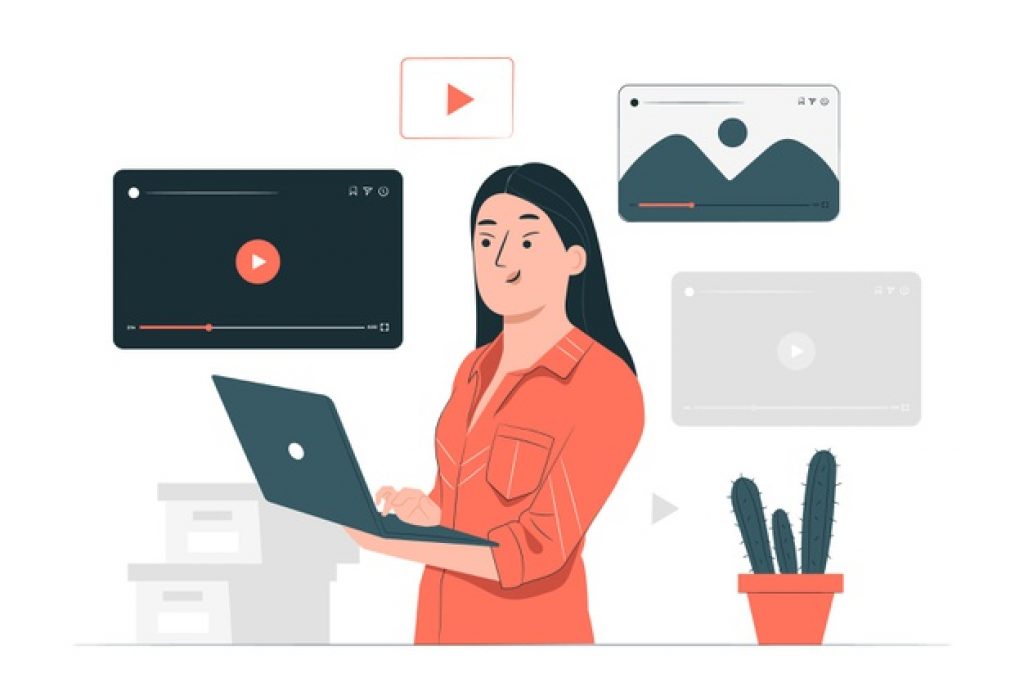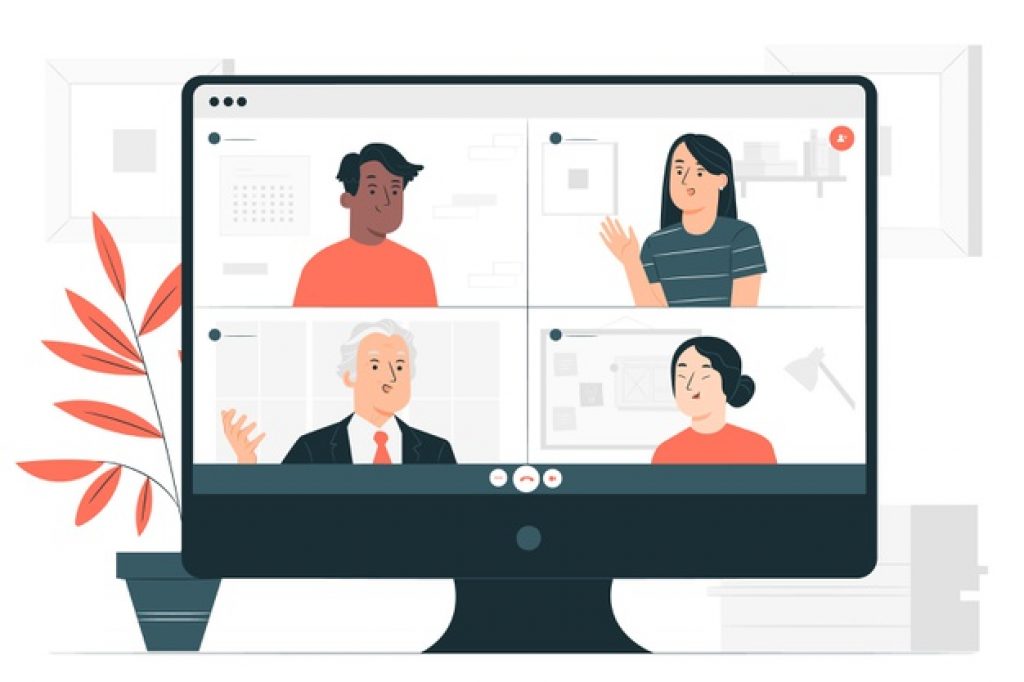
Over 97 percent of people say that videos help them understand a business in a better way. According to research by Forrester, 75 percent of employees are more likely to watch a video than to read any emails, documents, or online articles.
By using videos for your organization’s internal communication, you can increase employee’s attention, improve overall engagement, and provide employees all the tools that they need to manage their work and collaborate with their team members.
Shifting to asynchronous videos also allows employees to avoid confusing email threads and long meetings that only eat up their already limited time. In fact, videos are the perfect way for you to share valuable and timely information with your employees.
After all, your employees may not have time to read long reports or emails but it is easier for them to watch a short video while they are on the go or taking a small work break. In this article, we will discuss all the ways you can use video to improve your organization’s internal communication.
Table of Contents
1. Training videos

Source: freepik.com
You can make employee training more effective, fun, and interactive by incorporating videos in your training modules. The idea is to break down the training details into small and digestible videos that employees can view any time they want and still be able to grasp all the information.
Providing employees with training videos cannot just improve information retention and employee engagement, but it can also readily decrease the overall training costs involved. Moreover, self-paced learning through training videos allows employees to learn new concepts at their own pace which directly improves productivity and efficiency within the organization.
The biggest problem with internal training materials, whether it is written documents or classroom training, is that you can’t accurately measure them. There is no possible way of knowing if all the employees have engaged with the training material and to what extent.
On the other hand, videos are rather easy to track and measure. You can’t just track how many videos every employee has seen, but also analyze where the most drop-offs occur to optimize your training videos even more in order to improve engagement. You can also make training videos right from your desk in a few minutes with the help of the many free video editors like Clipchamp.com available online.
2. Employee onboarding
The first week in a new organization can be exciting, overwhelming, and nerve-wracking at the same time. New employees have loads and loads of information that they need to quickly grasp in order to start working officially. Onboarding new employees in the right way can improve productivity and employee retention. At the same time, ineffective onboarding can make organizations lose up to 25 percent of their new employees in the first 12 months.
While there are many reasons that make employees leave a company in less than a year, poor internal communication is definitely one of the major driving factors. Effective internal communication is extremely important when it comes to onboarding new employees and getting them up to speed so they can quickly settle with their team. But onboarding doesn’t just mean providing employees with a welcome kit along with hundreds of pages of documentation. It’s about ensuring that employees have all the tools, knowledge, and help that they need to be successful in their positions.
Incorporating videos as part of your employee onboarding process can make it easier for new employees to settle down and understand the organization in a better way. It can especially be useful for remote employees who don’t get to visit the company offices often to understand the company culture in a better way and what is expected of them.
3. Walkthrough videos

Source: freepik.com
Whether you want to guide employees on how to use a new tool in the organization or demonstrate a new feature that has been recently introduced, walkthrough videos can help you go a long way. You can use screen capture videos or picture in picture to explain different business processes and then share these walkthrough videos with everyone in the organization.
Walkthrough videos can also be useful for answering the most common FAQs that employees usually have, like:
- How to apply for leaves?
- How to troubleshoot common technical problems?
- How to best use the different applications and tools leveraged within the company?
- What is the best way to communicate with in-office and remote coworkers?
4. Share company news

Source: freepik.com
There is always some or the other company news that needs to be shared with employees. Most organizations go the email way to share frequent company news with the employees. But here’s the thing: most employees don’t even end up reading the news emailed to them because they are usually too busy handling their daily work responsibilities.
Videos can serve as perfect for sharing regular company news and updates in an easy and effective way. By summarizing all the news in short videos, you can not only control what aspects of the videos the employees should focus more on, but you are also assured that your employees don’t have to spend more than 4-5 minutes of their time skimming through the company news.
5. Improve company culture

Source: freepik.com
A company’s culture determines how employees interact with each other and manage their work. It is not a place that you can reach, it is more of a mindset that can take a long time to create. Even the companies that don’t have an explicit culture, have some kind of culture in them. Employees know what is expected and what isn’t.
But imbibing a company culture that stays the same across all the different verticals and locations of the organization can become all the more difficult. With the majority of the workforce going remote, making employees understand company culture when they don’t even get enough opportunities to interact with their coworkers or work from the company office can become all the more challenging.
Capitalizing video as a medium to boost company culture can help employees understand how the company operates, what is expected of them, and what are the main values that the company is built upon.
Top tips to create effective internal communication videos

Source: freepik.com
In order to make your internal communication videos even more effective, here are a few tips you can follow:
- Communicate the importance of videos: There is no doubt that video is a powerful tool to share information. But for you to effectively leverage it within your organization, you need all your employees to understand its importance. Educate employees on why you are shifting to video for internal communication, how it can bring more value, and why it is beneficial for the employees.
- Create basic guidelines for video creation: To introduce uniformity and maintain quality for all your videos, it’s crucial to create a set of guidelines that align with your company’s overall culture and branding as well. These can include the maximum length of videos, the type of language to include, and the main purpose of videos.
- Encourage mobile video viewing: You should ideally have a digital workplace platform that can centralize all the content and allow employees to access the data from their mobile phones as well. This will in turn help employees in viewing internal communication videos even when they are on the move. Encouraging mobile viewing doesn’t just improve employee engagement, but it also drives adoption since employees aren’t chained to their desk all the time, just to view a few videos.
- Leverage video templates: Creating videos from scratch can take a lot of time and effort. To churn out powerful videos at a faster pace, you can leverage video templates. The idea is to keep different types of editable video templates for different internal communication requirements that you can quickly customize to create and share videos for your employees. Learn more about the different types of videos here https://www.ajaxcreative.com/video-types.
- Powerful storytelling: The videos that you create should have a story to them in order to make them interesting for the employees. The goal should be to create approachable and inspirational videos that can resonate with your employees. A great way to do that is by sharing your videos from an employee’s perspective. For instance, if you are creating a company culture video, one of your C-suite executives can speak directly on camera to share what it really means to work in the organization and how employees are continuously encouraged to perform their best.
Today’s disparate workforce located across different parts of the globe has made internal communications a big challenge for organizations. Even with an array of digital tools at your disposal, it can be a struggle to maintain employee engagement and retention. Videos can help minimize communication barriers, improve collaboration, and deliver information to the employees in a way that makes it easily consumable.








